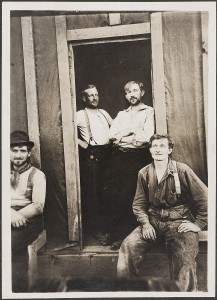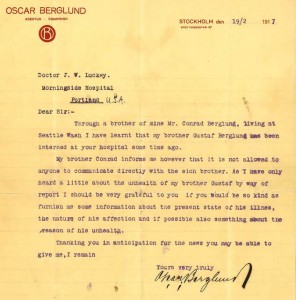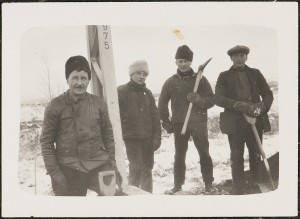Thursday, October 25, 1906
Fairbanks Evening News
 Man Being Brought From Richardson Is the Third Case Which Has Developed Within Past Three Weeks
Man Being Brought From Richardson Is the Third Case Which Has Developed Within Past Three Weeks
Marshal Perry is in receipt of a telegram from Richardson, stating that two men, Maher and Espy by name, left the Tenderfoot town yesterday with an Insane person in charge, who will be kept here until there is some improvement in his condition or otherwise, until he can be sent outside to Mount Tabor (the early name for Morningside Hospital).
This is the third case of insanity which has developed in the Tanana during the past three weeks. Jack Spencer was brought up from Gibbon and tried before Commissioner Erwln, and, although he was discharged, the general opinion appeared to be that he was a fit subject for the wheelhouse, unless he could be kept away from the Influence of hootch. Jack was Interdicted by the Jury which tried his case, or a recommendation was made to that effect.
The case of Mrs. Black is hardly a week old. Mrs. Black, the mother of a family at Gibbon, went violently Insane at that place, and the commissioner there having no jurisdiction to try the case, the afflicted woman is now on her way to Rampart, where she will be held awaiting some improvement in her condition or until her case is dispensed of by Commissioner Green.
Commissioner Hedger has already dispensed of the case of the patient at Richardson, but there being no place at that point where such cases can be properly handled, It was thought best to send the Insane person to Fairbanks. The name of the man is not known here, the Richardson commissioner having failed to mention it in his various dispatches.
 Brother and uncle, Lawrence Joseph Ross, 91, died Sunday, July 22, 2012, at Denali Center where he had lived for the past 39 years.
Brother and uncle, Lawrence Joseph Ross, 91, died Sunday, July 22, 2012, at Denali Center where he had lived for the past 39 years.


